15 STEPS TO GO DEBT FREE
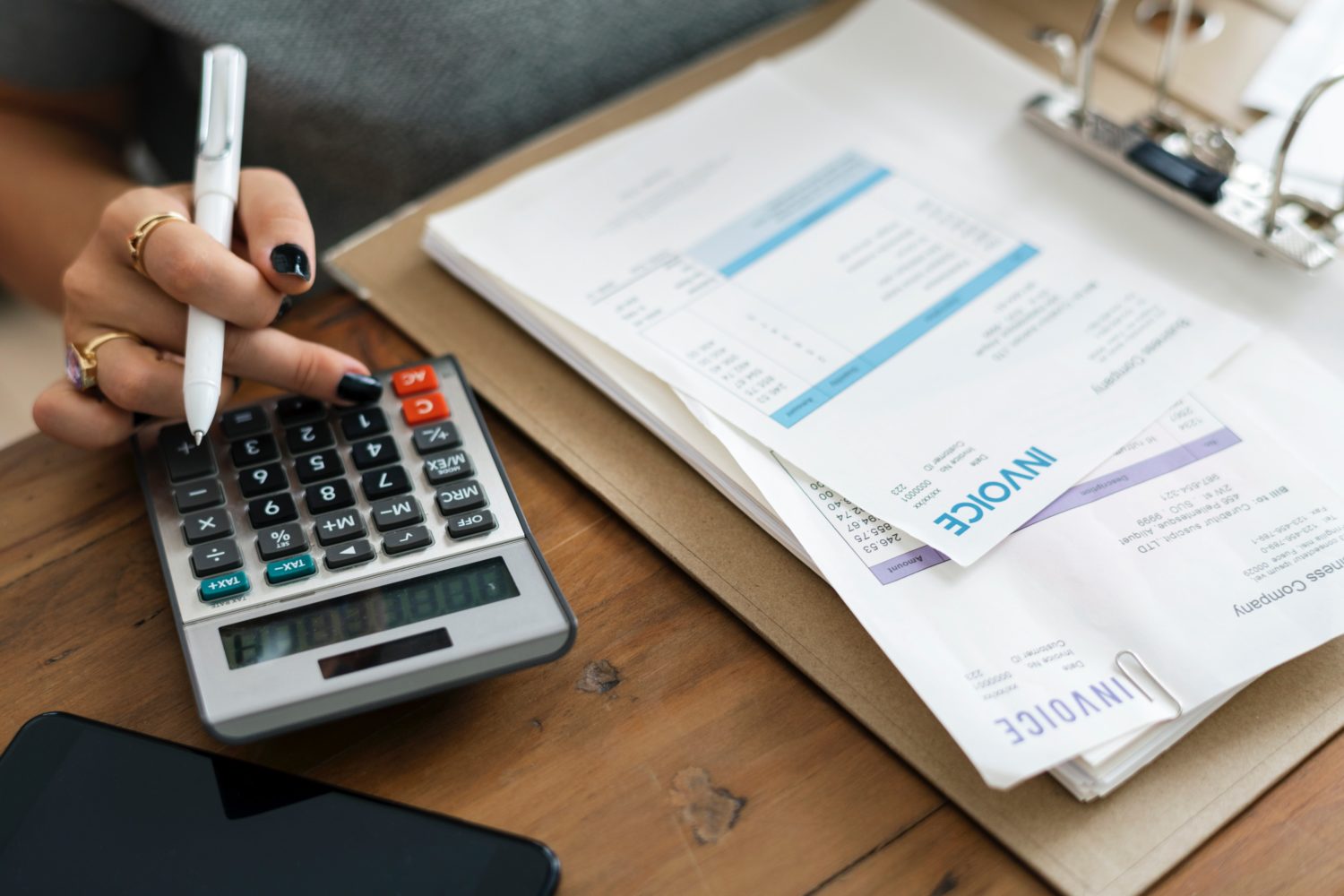
Living with the constant worry of pending debts is no good living. Sleepless nights, stress and anxiety are all too familiar side effects that come with having a debt.
Some may have acquired expensive habits and unaware of living outside their means, while some may have found themselves caught on a rainy day and, before they know it, they are trapped in credit cards debts unable to pay them back. There are many reasons why people find themselves in debt, but one thing is sure: if you are reading this article is because you, or someone you know, is struggling under the burden of debt and you are looking at ways to pay it off and live securely.
The bad news is that paying off debt is hard work. Sorry! You will have to make changes, sacrifices, and there will be times when you will feel tired, defeated and even lonely.
The good news is that paying off your debt and living debt free comes with many positives. By learning how to eliminate your debt you will acquire a renewed respect for money and a better understanding of your finances. Also, by learning budgeting skills you will be able to quit the paycheck-to-paycheck lifestyle and feel in control of your finances and life choices. Once debt free you will also be able to save for retirement, plan holidays and, needless to say, this will deposit a big-fat happiness cheque in your happiness bank.
The road to dept free living starts today. Empower yourself and start your journey to a better and brighter future by starting with some easy steps.
STEP 1 – FACE THE MUSIC AND QUANTIFY YOUR DEBT
In order to pay off your debt, you will need to figure out how much you are in debt.
Seems silly, but you’ll be amazed! Most people have no idea how much debt they have, which is simply frightening because it means there is no plan on how much and how to pay it back.
Get a calculator, gather together your credit card statements and any other repayments you have outstanding. By adding it up, you will have a more realistic figure. Surprisingly, when most people complete this step, they realize that they have a lot more debt than they originally thought. It may be scary but it needs doing. Remind yourself that you are doing this because you have realized there’s a problem and you are here to solve it.
STEP 2 – UNDERSTAND WHY YOU HAVE A DEBT
An important step to becoming debt free is to face the issues that led to your debt. If you don’t do this step, you may find yourself in yet another debt in the not so distant future.
By identifying the cause at the root of the problem, you will be able to understand what brought you here in the first place and how to avoid it in the future.
Try to be as honest as possible with yourself. Ask yourself questions such as why do you think you are in debt? Could it be you have an emotional spending problem? If so, how does the act of spending makes you feel and why is owning those things so important to you? Perhaps you found yourself in a financial emergency. If so, did you have an emergency fund? If not, why did you not save for one and how can you prevent this from happening again in the future?
STEP 3 – PUT YOUR OUTINGS UNDER THE MICROSCOPE AND CREATE A REALISTIC MONTHLY BUDGET
Budgeting will help you take control over your debt and enable to manage your financial situation in the future.
Gather your bank statements, make a list of your regular outings and try to be as accurate as possible about the “unexpected” outings of the last few months. Fully itemise what you spend each month. You can do this on a spreadsheet, or by using a (free) budgeting tool.
While keeping in mind the reasons that brought you here in the first place (a spending habit or not having an emergency fund, for example), create (and live with) a realistic bare-bones budget. You are going to pay back a debt so you will need to tighten your belt, buckle up and plough through this time, but no point in sticking to an unrealistic budget which is certain to send you straight to a fail!
To work out your bare-bones budget nail down your spending from previous months, slash non-essential expenses, dig a little deeper by asking yourself what else can you do without, list your new bare-bones expenses and tally them up.
If you have a family you may find it’s helpful to sit down with them on a regular basis, perhaps once a month, to review where you are at. Take time to reassess your unified financial goals and whether changes and adjustments need to be made. Communication is paramount in keeping the unit together, involved and motivated towards you family’s financial goals.
Also, by reviewing your debt status from time to time you will be able to see the progress and by looking at where all your money is going, you may spot other savvy opportunities that work for you. You may find missing out on eating out is no trouble but not having cable is a big ask.
STEP 4 – CLOSE YOUR CREDIT CARDS: NO MORE ADDING!
If you’ve made the changes in your budget, have some extra income and it’s safe for you to close your credit card accounts, it may be the next best thing you can do.
By closing off your access to credit cards you are effectively cutting your dependency from them. Whilst this may seem daunting at first, in the long run it will help you to be free of all your debts.
Make the decision of not adding to the debt by cutting off temptation all together: don’t take out extra student or personal loans that you don’t need, cancel your credit card or ask for your credit card limit to be lowered.
Remind yourself that credit cards give you money that you will eventually have to pay back and, if you miss your payments, you will pay sky-high interests on top! It is also good practice to ensure you have some cash or money in your personal bank account before buying something with a credit card, to ensure you will be able to pay back when the deadline comes.
When talking about credit cards it may help to familiarize with some of the terminologies they use:
- Balance. The credit card balance is in negative, not in positive! Your balance is how much money you have spent using your credit card and not how much money you have available!
- Interest rates. If you use your credit card and pay your balance in full each month, then you don’t have to pay interest. However, if you don’t pay your balance in full, or if you only pay your minimum payment, then you’ll most likely owe interest that continues to grow until your balance is fully paid off.
- Minimum payments. The minimum payment on your credit card is the smallest amount a lender will let you pay every month, and if you only pay this amount, they will start adding interest charges to your total amount due.
- Credit limit. Your credit limit is how much money you can spend on your credit card altogether. Some may give you only a few hundreds, others a few thousands. Credit card companies decide what your limit should be based on your credit score, length of time you have had credit cards, your income, and so on.
As you move away from using credit cards, it’s important to start implementing a healthier habit towards spending and look at embracing the benefits of buying less.
Avoid window shopping by taking up more meaningful pastimes. Find a more meaningful state of mind, for example by volunteering at a care home or by pairing exercising with walking dogs at your local kennel. This is an opportunity to seek more meaningful relationships and less material ones.
STEP 5 – MAKE A FINANCIAL GOAL VISION BOARD

Visualizing your goals helps focusing on them. You can do this by displaying your financial goals on a spread sheet. Yes, an excel doc may not be as attractive as a pretty mood board, but having something visual in front of you may help you make that goal a little bit more real.
You could, however, also make a more visually appealing one using a real size pinboard to display the things that debt freedom will allow you to do. This could be a holiday or being able to save up for a house deposit.
STEP 6 – STAY MOTIVATED
Tightening the belt to pay off a debt is never going to be fun, despite the knowledge that many benefits are waiting at the end of the road. I am a great believer that it’s important to keep a positive mindset and that it’s up to us to create a positive narrative our life. One way that may help you get through this time is to celebrate the small successes. Set yourself regular targets and rewards, for example, when you repay your first card of your first £1,000 of debt, think about rewarding yourself with some kind of treat… but do not go overboard!
Also, it’s important to try not to get stressed and compromise your health over your debt by reminding yourself that you are already actively working towards it. You are still entitled to retail some time to enjoy life by going out for a walk, or having a laugh with a friend. Just because you make it a point of having a miserable time your debt will not disappear. However, by spending time with your loved ones, you’ll be able to take your mind off, perhaps even share some worries with someone you trust which will help you to recharge your batteries and keep motivated.
STEP 7 – PLAN FOR A RAINY DAY

One of the most common reasons people end up in debt is because they don’t have an emergency fund. An emergency fund is something that everyone should have. We can’t predict the future. No one can tell us when the next emergency will happen, but being prepared is half the battle. Your car may break down, you may fall it, your hours may be cut back or you may lose your job (the recent Coronavirus pandemic did a great job at reminding us of the emergencies that could lurk just around the corner!). You need to be prepared because if an emergency does arise, you won’t be forced to rely on credit cards or borrowing money in order to solve your situation. Your emergency fund is there to cushion you if an emergency arises!
Typically, it is recommended that you save somewhere between three to six months of expenses in your emergency fund.
STEP 8 – LEARN TO LIVE WITHIN YOUR MEANS
Drop expensive habits. You should always be spending less than you earn.
If you’re consistently coming up short each month, you may want to take a closer look at your habits. It may be that you have a little spending problem and learning to live within your means will need to be on top of your list.
However, money spent on food and entertainment can easily add up too, without you noticing. Reviewing how you spend money each month will certainly give indications that you can work with.
You don’t have to cut back on everything, but you may need to readjust on what and how you spend your money. For example, you can still dine out, perhaps not at the finest restaurants. You can still buy cup of coffees when out but you may want to consider heading to a local unbranded one where you may get more for your money. You may also want to consider helping your case where you can, for example by compromising on packed lunches instead of eating out during the week, in order to earn a dinner out in the weekend.
You may also want to reconsider your needs. For example, do you need a newer phone or another accessory? Try to view this not as a restriction or punishment, but as a way to build healthier spending habits which will help you reach your goal sooner and live better.
Here some suggestions that may make a difference to your monthly expenditure:
– Ask for lower interest rates on your credit cards — and negotiate other bills.
- Renegotiate for a lower monthly phone bill. You will be amazed how much mobile phone network providers are willing to compromise both in terms of money and deal in order to keep you on, if your contract is due for renewal.
- Save money on food by packing your lunches and shopping smart. Buy fresh raw ingredients instead of ready meals and consider cutting off meat which will certainly reduce your grocery bill as well as making you healthier.
- Swap an expensive hair saloon for a cheaper local one. Having my hair done makes me happy, but simply put, some hair saloons are crazy expensive!
- Consider whether you need cable, satellite TV, or any other media service provider.
These are just some ideas. Hopefully, by looking at your monthly outings you will be able to identify what works for you.
STEP 9 – BUY & SELL USED

Although buying second hand may not be everybody’s cup of tea (I personally find buying second hand clothes a no-no) a lot still has to be said in favour of second hand for other items, such as furniture. Explore!
If you have something that is worth some money, that you are not particularly attached to and that you don’t need, consider selling it. Let someone else enjoy it and give it a new lease of life.
STEP 10 – EARN EXTRA MONEY
If you have compromised on a lot of the above mentioned and you are still struggling to meet ends, consider changing your job for a better paid one or finding a way to make some extra money.
I am not so much in favour of getting a second or third job when you already have a full time one, as this could really have a serious impact on your health. However, maybe you have been sitting on a comfortable job for a long time and getting a new job with new challenges could actually do you good by showing you how many other things you are capable of and boosting your self-esteem. Perhaps you are a teacher and maybe you could consider some seasonal work, or maybe you could consider looking for an online job that you can do in your free time: from becoming a virtual assistant to offering your professional skills as a consultant. Check out TaskRabbit, Upwork.com and even your usual job seeking platform like Monster that more and more are adapting to today’s’ demands for flexible working from home.
STEP 11 – PAY WITH CASH, NOT PLASTIC!
If you haven’t done it in a long time, give it a go! It’s a surprisingly interesting experiment!
Paying with cash, rather than by card, makes you really think about the money that you are spending. Somehow, the actual act of handing over cash has a bigger impact on our spending perception. It really forces you to think about where your money is going, how you are spending it and how frequently. It does an excellent quantifying visual job.
For me it’s like cake. I know cakes are packed with sugar, but when I eat a cake that I haven’t baked myself, I am somewhat immune to that knowledge. However, when I bake it and I see how much sugar goes into it, that knowledge really acts as a reminder to eat it sparingly.
STEP 12 – PAY INTO YOUR DEBT FUND EVERY MONTH
To make headway on paying your credit card balances, if you can, pay more than the minimum repayments each month. Credit card companies put the minimum repayments out there to keep you hooked. They are not your friends. They make money off you. So, set up a standing order or direct debit and if you can add more without killing yourself over it, pay more into it every month. Even an extra 50 quid can make a difference.
Also prioritize repaying your most expensive debts first. Store cards tend to be much more expensive than mainstream credit cards, so get rid of those first. But even when prioritizing, continue to make at least the minimum payments on all your other credit cards to avoid extra charges.
Finally, carefully revaluate your savings contributions. Yes, you want an emergency fund, but if the interests on your savings are lower than the interests on your debts, then that’s false economy.
STEP 13 – MOVE YOUR DEBT TO A 0% BALANCE TRANSFER CREDIT CARD
Now, only do this is you are well organized and disciplined! Applying for a long 0% balance transfer credit card can be a good idea, as it can give you the opportunity to pay your debt, or part of your debt, without paying interest on it for an initial period, normally 6 to – even – 30 months. You normally pay a fee for the balance transfer to move debt across, but this is still cheaper than having debt charged at upwards of 16% per year!
I would strongly recommend that if you choose this option you must be disciplined and that every month you pay money into an account so that, when the deadline comes, you can pay it all off at once!
STEP 14 – PAY OFF BANLANCES WITH FUND MONEY
Maybe you recently received an inheritance, or a bonus, or you received a tax refund, or you won the lottery. Whatever type of “found money” it is, it could go a long way towards helping you become debt-free. So, if you recently received some sort of fund money, stop and think before you go on a wild shopping spree!
STEP 15 – CONSIDER A PERSONAL LOAN
If you are stretched to the limit with your belt tightened to the max and you’re still struggling to make minimum repayments and you’re worried about taking out another credit card, a personal loan can work out more expensive than a 0% interest credit card, but has the big advantage of giving you some leave and peace of mind while giving you a set end to work towards.
CONCLUSION

Living with the constant stress of a pending debt over your head and living paycheck-to-paycheck lifestyle is no fun. It is also extremely worrying to have no way of saving up for a rainy day. For as strong an invincible as we may feel right now, we are not immune to bad luck, emergencies and global market pandemic or catastrophes.
No matter what type of debt you’re finding yourself in, it’s important to face the music, quantify it, understand it and act upon it. It may not happen overnight and it will be hard work, but it’s well worth paying your debs off as it will enable you to move on and lead a better and more meaningful life concentrating on the things that matter to you.


